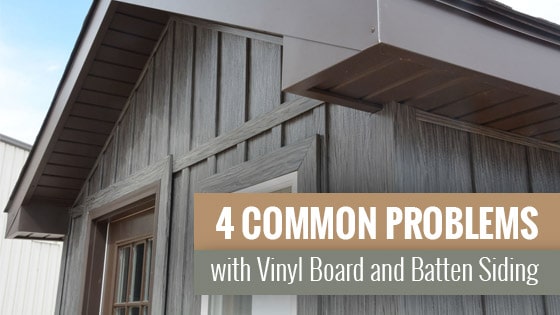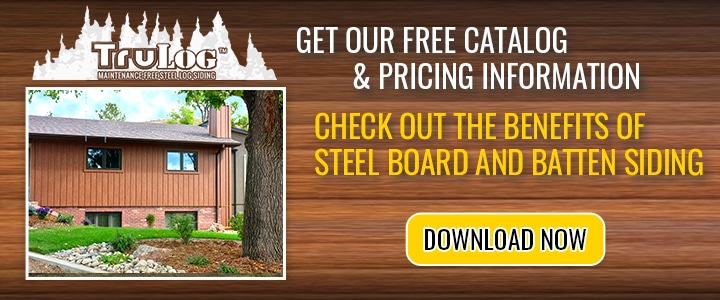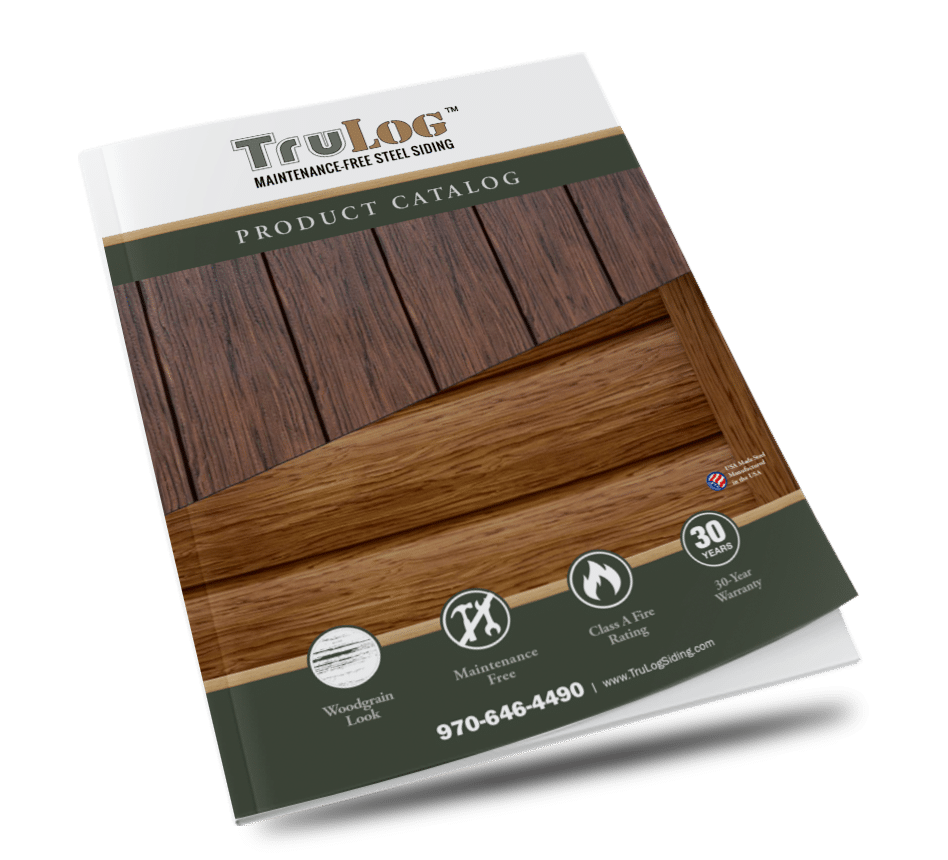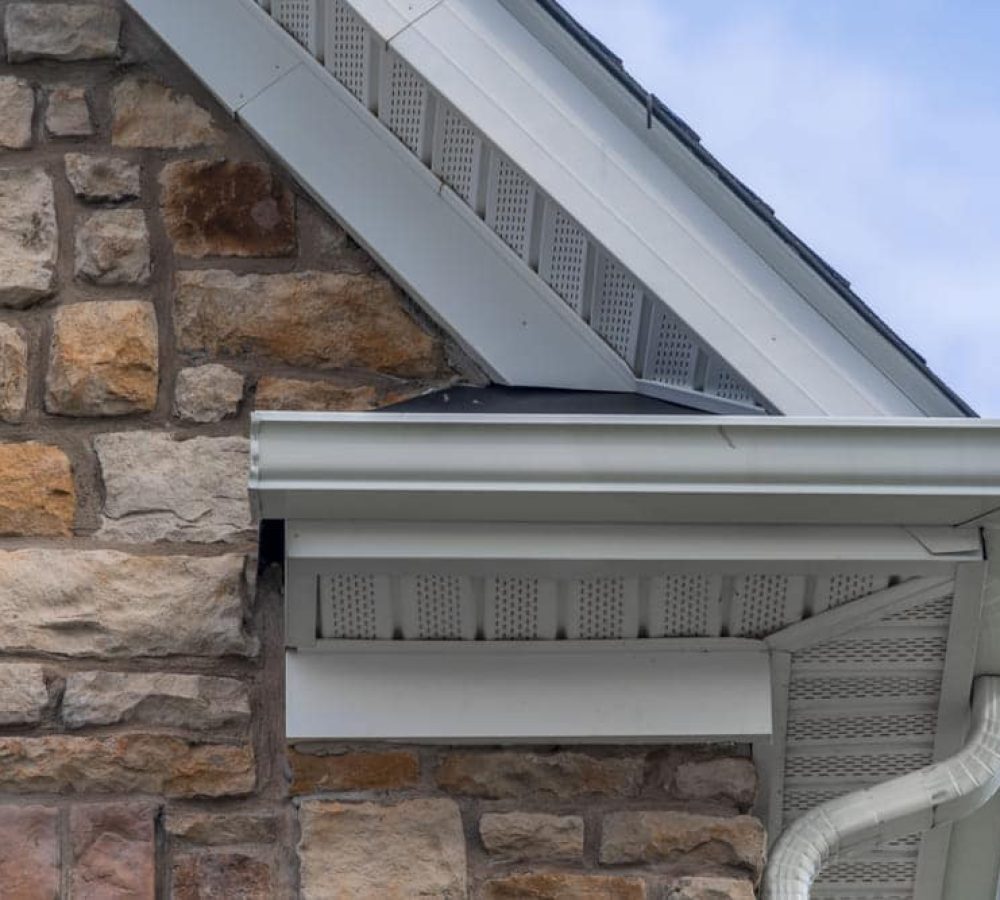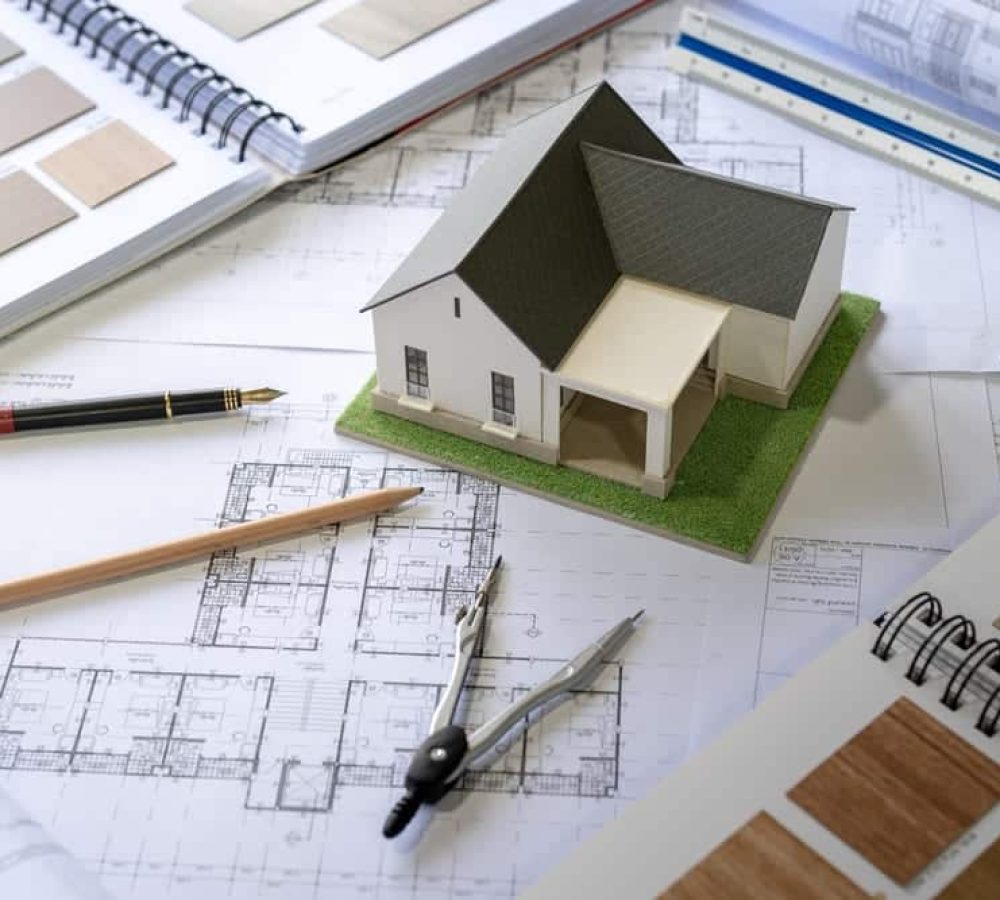Board and batten siding is one of the earliest types of milled siding used in the United States. It has a long history of being popular for many housing styles, and can add a lot of charm and old fashioned style to a home.
Traditional board and batten siding was created out of wide planks of wood installed vertically. Where the planks joined one another, a thin strip of wood known as a batten was installed over the join. This helped make the homes more weathertight, and gave rise to the distinctive style that is still loved today.
Because wood board and batten siding needs a lot of care to look its best, and attempting to scrape and paint the many battens can be difficult and time consuming, many homeowners have searched for alternatives to get the traditional board and batten look. This includes using different materials such as vinyl to get the style without the maintenance.
Board and Batten Vinyl Siding Problems
While vinyl is lower in maintenance than wood, it still isn’t the best choice for most homes. Vinyl has several common problems that mean that it won’t give you the look or performance you really need:
1. Seams that Mar the Look
One of the best parts of a board and batten installation is the style. The battens are installed over the joins between two planks in the original layout, and at the time the look was first invented, planks were long enough and houses short enough that there were often no visible seams on the siding.
Vinyl siding, however, will always show a lot of thin, overlapping seams. These seams cast a shadow wherever they’re present, and in a board and batten installation you’re going to have two sets of seams; one vertically where the different panels interlock, and one horizontally when one sheet stops and the next joins.
While there are ways of dealing with the horizontal seam, such as using a horizontal break between stories, vinyl installation usually means cutting off strips that are too long and starting your next course with them. This will mean that it takes more material and a very careful installer to avoid having excessive seams.
2. Melting and Warping
Vinyl siding is made from plastic – polyvinyl chloride to be exact. And like any plastic, vinyl has a relatively low melting point, at which time it begins to soften and warp. In hot climates like Arizona, vinyl siding can melt and warp dramatically on homes that experience direct sunlight.
Even in colder climates, some melting and warping can occur if the home is located near another home that has windows treated with a low-E coating. This coating is meant to help make homes warmer, but it also causes the sun’s rays to bounce off the window, and if they hit the vinyl siding of a home nearby, can cause the siding to melt.
3. Cracking and Breaking
Vinyl melts in hot temperatures and it often cracks in very cold temperatures as well. Vinyl siding is very thin and when the material freezes, it becomes extremely brittle, losing its tensile strength. Any sharp knock on the siding will then cause it to crack and break. You won’t have to paint your home each Spring, but you will have to replace any of the cracked boards to help your home maintain its curb appeal.
4. Fire Risk
Vinyl is not flame-retardant, which means that homes covered in vinyl that are located in areas where wildfires are common are at particular risk. Vinyl has been shown not only to burn and melt, it can also ignite from even further distances than wood. It’s also more likely to direct flames upward to the attic, where most of the major damage and safety issues in a fire can occur.
A Better Board and Batten Vinyl Siding Alternative

If you love the look of board and batten siding for your home, and want something more durable and lower in maintenance than wood, consider steel board and batten siding instead of vinyl. Steel siding is incredibly low maintenance. It doesn’t peel, chip, or fade, so you don’t need to worry about scraping and repainting every few years.
Steel siding is also incredibly durable, it won’t dent, crack, or break, and it holds up well in both hot and cold climates without melting, warping, or developing other problems. Steel is also flame retardant, so it’s beneficial in areas prone to wildfires as well.
Best of all, steel board and batten siding is designed to be seamless. The pieces interlock with one another rather than overlapping. The various lengths and horizontal breaks will give you a beautiful, seamless facade you can enjoy that outlasts and outperforms vinyl every time.
Invest in Steel Board and Batten Siding
Steel siding from TruLog is durable, low maintenance, and available in a variety of colors. It will give your home exterior years of high performance, while enhancing your curb appeal effortlessly and will continue to look great year after year. Download our Board and Batten Buyers Guide today!

